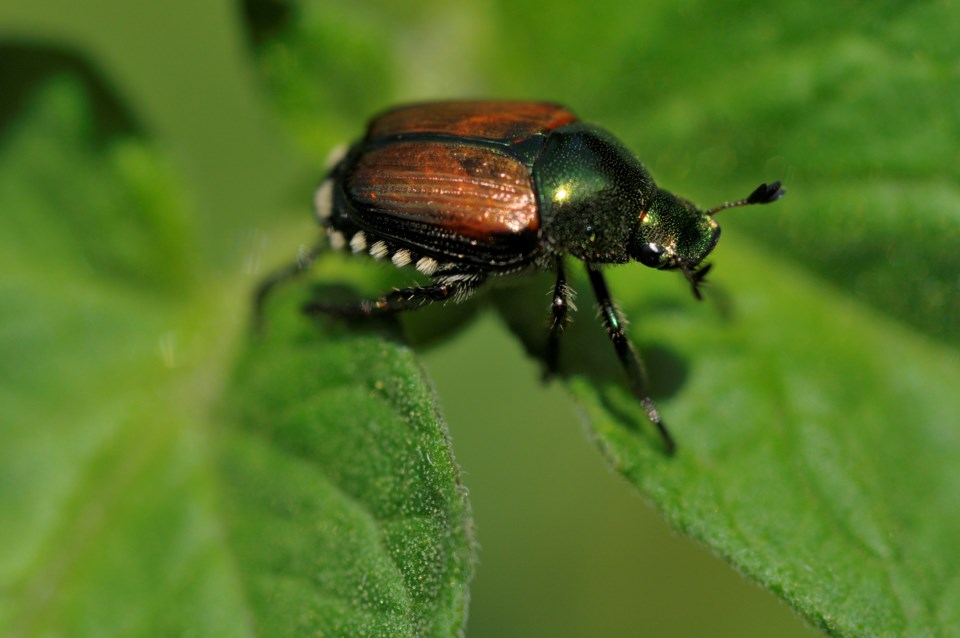The B.C. government is trying to eliminate a new invasive beetle that has been found in two suburbs of Greater Vancouver.
Japanese beetles are known to be destructive to plants and grass and the aim is to spray the larvae and reduce their spread.
Surveillance and trapping activities of Japanese beetles that began in 2021 found small populations in areas of Vancouver, Burnaby and Port Coquitlam.
Now, the City of PoCo has been asked to spray for the beetle .
So far, the two areas of PoCo where the pest has been found are boulevards in the southwestern neighbourhood of Routley Avenue and in the turf grass at Terry Fox Secondary School on the city's northeastern side.
"The city has been notified that the Japanese beetles have been detected in traps within the community and, as such, a Provincial Notice of Requirement to treat public lands for Japanese beetle has been issued," a spokesperson stated in a news release.
Beginning today (May 16) and through the week, a larvicide will be sprayed on public lands to try and curb the spread of the destructive pest, which feeds on the leaves of fruit trees, plants in ornamental gardens and turf in lawns, parks, sports fields and golf courses.
Burnaby is also treating public lands and parks in an area identified as hosting Japanese beetles.
Plans are to treat along boulevards and medians, and larger turf areas at Charles Rummel and Warner Loat parks in central Burnaby.
When the Japanese beetle came to North America
The Japanese beetle is native to the main islands of Japan, and was first discovered in North America in southern New Jersey in 1916.
According to the B.C. government, the Japanese beetle (Popillia japonica) was found for the first time in B.C. in the False Creek area of Vancouver in 2017.
The damage they cause is significant compared to other pests like European chafer beetles.
To find the beetle, officials have been hanging plastic traps in trees, and it's through this monitoring process that the beetles have been identified in Port Coquitlam and Burnaby.
Here's how to identify them:
- Adult beetles are approximately 10 mm long. They are metallic green with bronze-coloured wing covers, with white tufts of hair on along the sides and rear of the abdomen.
- Larvae are C-shaped creamy white grubs with a yellowish-brown head. They live in the soil and feed on grass roots, growing to a length of up to 25 mm by maturity.
Japanese beetle grubs are very similar in appearance to other beetle grubs like European chafer.
One of the telltale signs of a Japanese beetle infestation is skeletonized leaves. However, brown spots in grassy fields could also indicate the presence of Japanese beetles.
The beetles are expected to emerge from the soil in late June to early July, with populations peaking in late July to August. They feed on fruit and foliage of many species of plants and begin to fly when the temperature is about 21°C.
The larvicide used in treatment, Acelepyrn, is not harmful to people, pets, other animals, or other pollinators like bees and butterflies, according to the cities.
It is sprayed directly on the soil and turf and targets root-eating grubs.
Acelepyrn is approved for use in Canada by the Pest Management Regulatory Agency of Health Canada.





